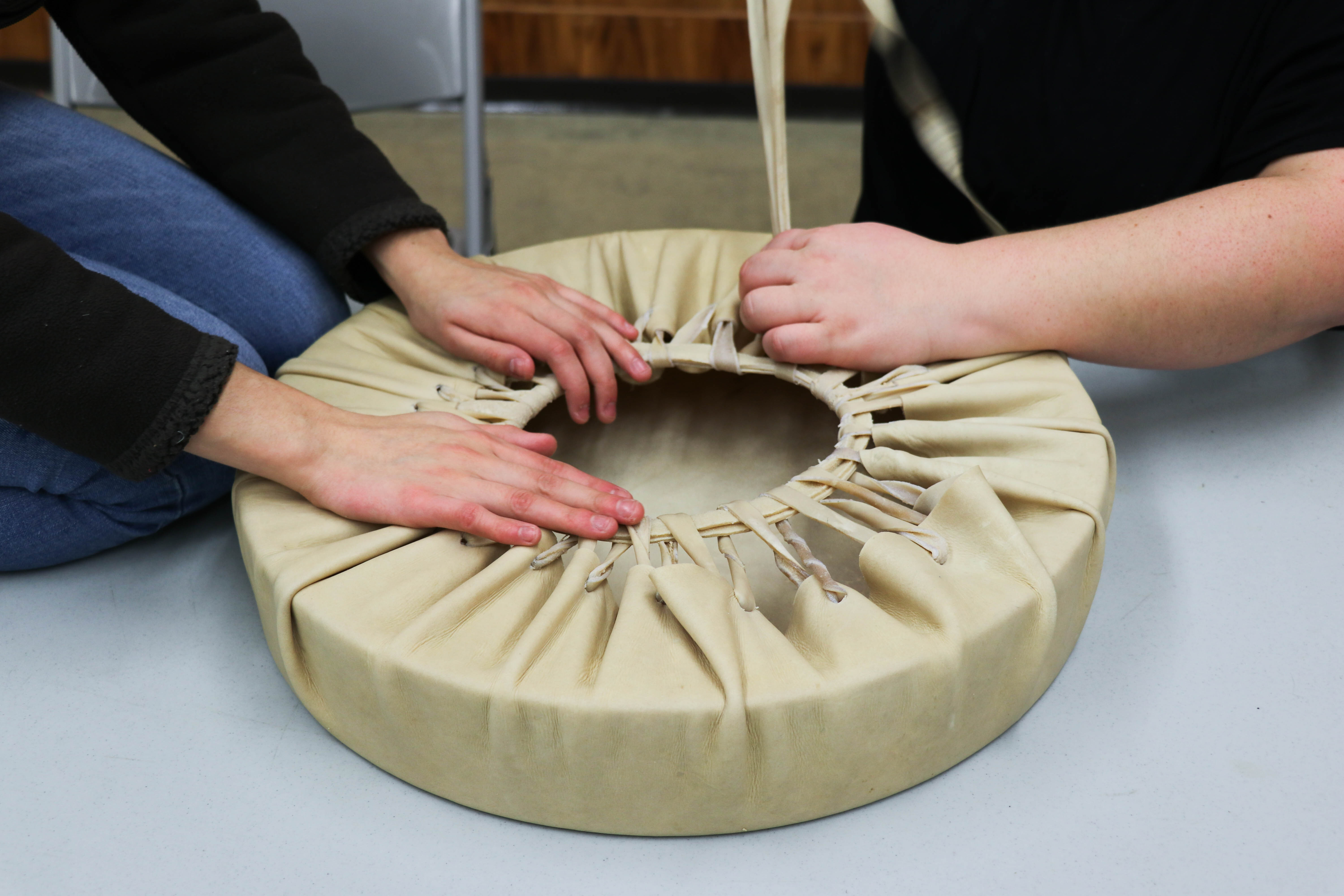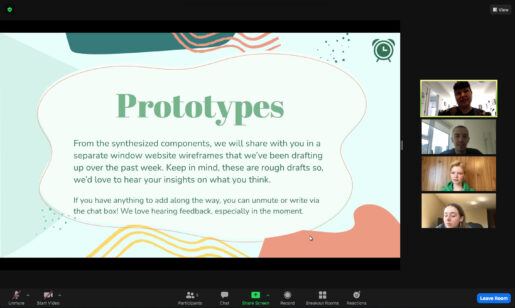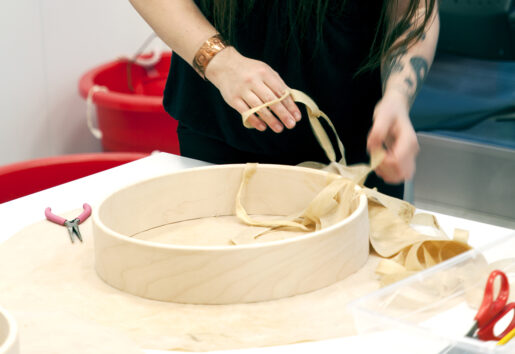How ECU Staff and Students Are Helping Shape the New St. Paul’s Hospital

Design researcher and ECU student Linh Phan (centre) with frontline staff at St. Paul’s hospital. (Photo by Perrin Grauer)
Posted on
A team of design researchers from the Health Design Lab worked with frontline healthcare staff for eight months to help design the future of healthcare in British Columbia.
Students and staff from the Health Design Lab (HDL) at Emily Carr University of Art + Design (ECU) are helping design hospital-department care spaces at the new St. Paul’s Hospital in Vancouver.
In partnership with the New St. Paul’s Hospital Project, the Shaping Scopes + Procedures at the New St. Paul’s Hospital project is co-led by Rob Paquin, a doctoral researcher in healthcare service design, and Nadia Beyzaei, designer and HDL manager.
“Service design is about unpacking what is and isn’t working and piecing together insights into opportunities for improving workflows, services and access to care,” Nadia says.
“By centering the perspectives of frontline staff, we’re adding a human-centered design lens to this project. Translating on-the-ground perspectives to upper-level leadership is where design can support change that reflects the current needs of staff in a transparent way.”
The HDL team also included a pair of design research assistants: fourth-year Interaction Design student Linh Phan (BDes 2024) and fourth-year Industrial Design student Mark Hanbunjerd (BDes 2024).

“By centering the perspectives of frontline staff, we’re adding a human-centered design lens to this project,” says designer and HDL manager Nadia Beyzaei. (Photo by Perrin Grauer)
Over eight months, the Scopes + Procedures team conducted a variety of onsite co-learning exercises and workshops with frontline staff across six departments at the current St. Paul’s Hospital in downtown Vancouver. These sessions included inviting staff from different departments to collaboratively walk through care scenarios and suggest how they could work together in the new space, including who would need to be involved and how new equipment and technology could be used.
By invitation from St. Paul’s staff, the HDL student team also shadowed nurses and other staff to observe their workflows and on-the-job decision-making firsthand.
Based on this layered engagement approach, the HDL developed a series of recommendations for the St. Paul’s Hospital Operational Readiness team to consider when launching the newly combined hospital unit.
Scopes + Procedures co-lead Rob Paquin says this is vital work for any healthcare organization. However, because the new St. Paul’s will bring together departments that haven’t previously shared space, including staff in the design of these new spaces is crucial for ensuring better patient experiences and improving health outcomes.
Rob, who was an emergency nurse and paramedic for many years, knows from experience why this matters.
“When I was working frontline, my colleagues and I would say multiple times daily, ‘Why are we doing things this way? If we just did X, we would be able to see more patients and care better for them,’” he says.
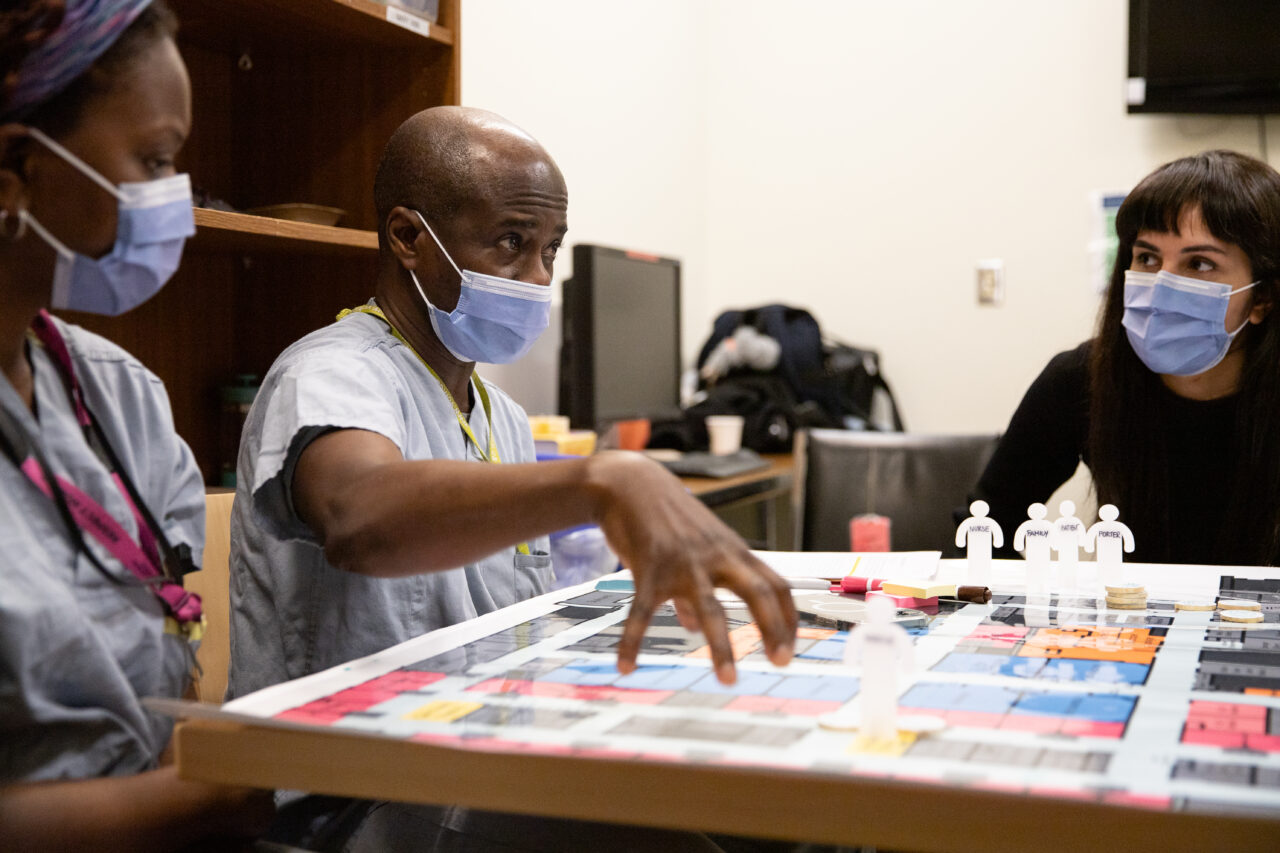
Nadia Beyzaei (right) leads a workshop at St. Paul's hospital. (Photo by Perrin Grauer)
“Service design is about respecting and elevating the voices of frontline staff, which is essential in this crisis where people are leaving health professions at alarming rates. It’s also about improving patient care. It’s possible to design a hospital that provides better health outcomes for patients and reduces opportunities for negative consequences of care.”
Design student Mark Hanbunjerd, whose work as a research assistant included donning scrubs to shadow nurses during their shifts, says he witnessed these effects firsthand.
“The last time I visited the gastroenterology clinic, the nurses told me, ‘We really appreciate you being here because we thought you would’ve left by now and we’d never hear from your team again,’” he says. “Going back over and over really built trust that maybe — with all the change going on — staff voices are being considered.”
Design student Linh Phan, who had accompanied nurses to the Bronchoscopy Suite for a procedure earlier in the day, says the value of service design for all participants cannot be overstated.
“Quality improvement and research projects can be collaborative, fun and meaningful, not only for the project team but for the people being engaged,” she says. “From a student perspective, getting to practice in the field is an experience you cannot compare to classroom learning. Designing, to me, is learning through making. You actually have to be there. You actually have to do it.”
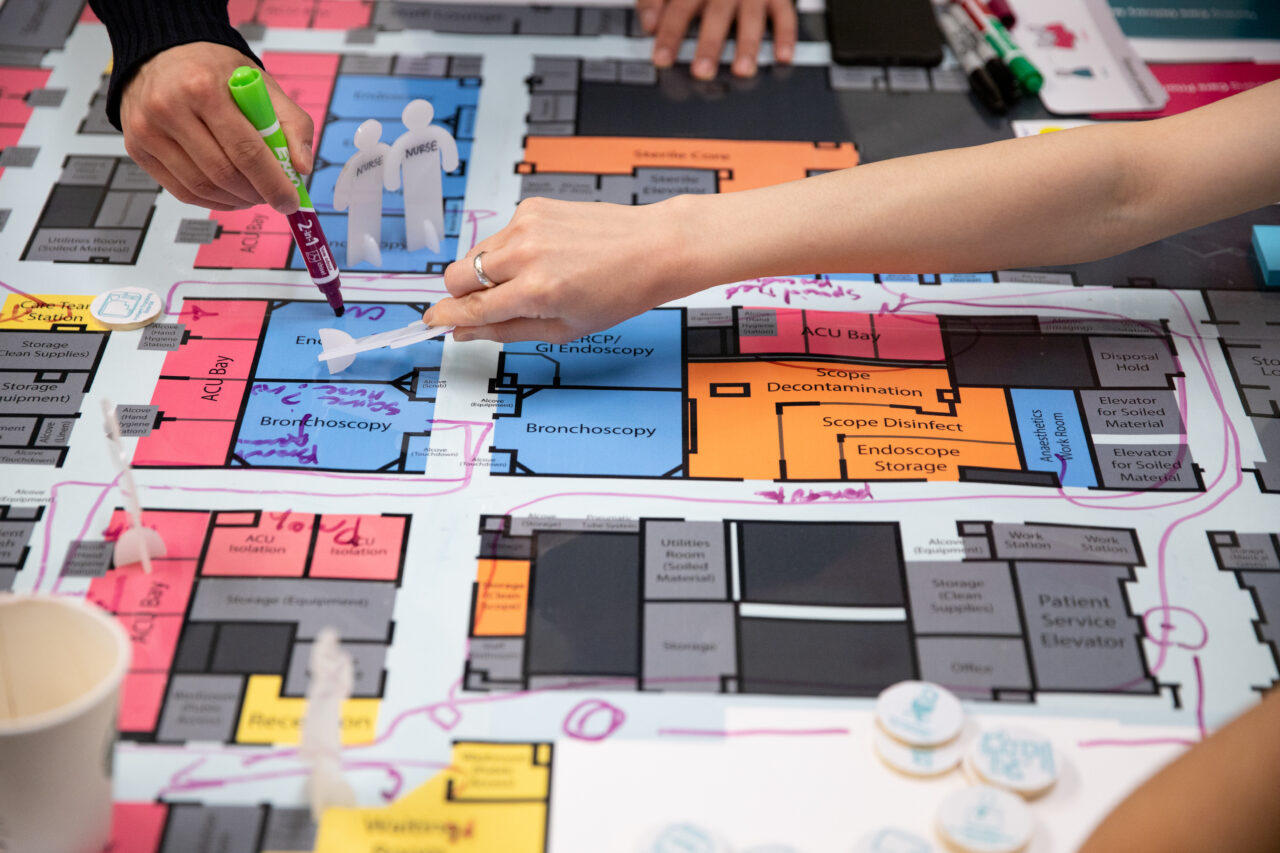
Design researcher and ECU student Mark Hanbunjerd makes notes on a floor plan during a workshop at St. Paul’s Hospital. (Photo by Perrin Grauer)
Rob, whose doctoral research at King's College London focuses on service design in Canadian healthcare, says service design has long been a part of healthcare elsewhere in the world. The work of design researchers like Nadia, Mark, Linh and their colleagues is now helping to bring design thinking to the Canadian healthcare space.
Providence Health Care, which runs St. Paul’s Hospital, has been an ideal and open-minded partner for this work, he adds.
“I would argue Providence is one of the most advanced thinkers in this way in BC,” he says. “They’re not a big health authority, but they punch well above their weight with what they’re willing to try and do. They’re extremely innovative.”
With final recommendations now being delivered to leadership at St. Paul’s, Rob notes there may be opportunities to replicate the project on other floors at the new hospital, as well as elsewhere in the province.
“You can see change starting to happen,” he says. “It’s baby steps, but I’m cautiously optimistic this might be a game changer going forward.
